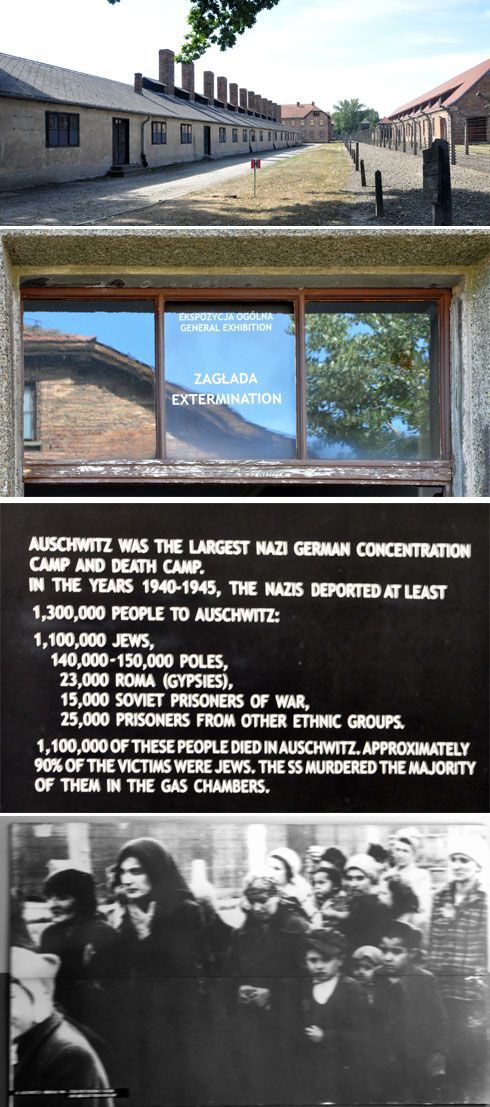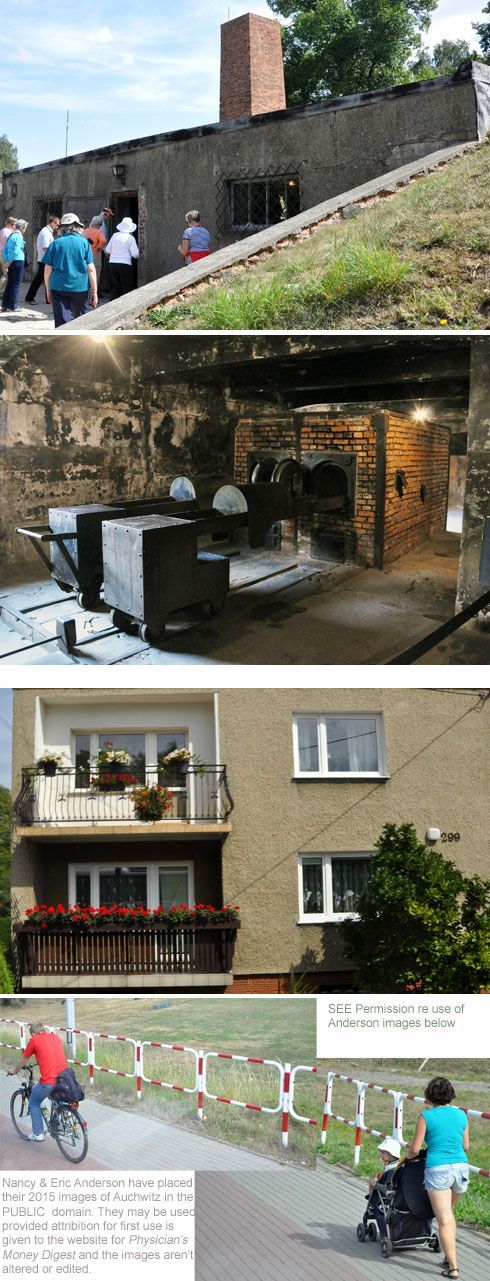Article
Poland and Auschwitz: Not Every Learning Experience on a Trip Has to Be Fun
Author(s):
A visit to Auschwitz can be perplexing for tourists. The heavy history of the World War II concentration camp is too much for some travelers, but the monument also stands as a means for human beings to reckon with our history.
We’ve been down, really down in the salt mine of Wieliczka where tourist access starts at 65 meters deep (450 feet). In 1978 UNESCO declared a chamber there about 450 feet deep in the mine as a sanatorium that might help asthma sufferers. We’ve also been up in Zakopane in the high lands to the south of Poland, almost in Slovakia. The Alpine-like town grew from the encouragement of a hydrotherapist who believed the salts in the water could be promoted in its spas and the high altitude of about 8,000 feet in the “Winter Capital of Poland” would help pulmonary patients

And we’ve been to Hell at Auschwitz, the Nazi concentration camp that was Hitler’s instrument to exterminate the Jews of Europe and, less obviously, the continent’s gypsy population, Germany’s political enemies, and Russian and some Allied prisoners of war.
We thought — as we did in July 2012 when we visited and wrote about Buchenwald near Weimar, Germany — Is this a place one would choose to visit on a vacation? And indeed a couple of Canadians in our Insight Vacations group chose a personal alternative of merely walking in the countryside and thinking about the world we live in. They already had their personal convictions about the Nazis and chose not to enter a place that killed 80% of the Jews in Europe. Understood. But people talk about lots of concerns these days and one is about responsible travel, and what is more responsible than facing a truth? Germany has done that; Japan has not. So whether we will ever learn from history is still a cliché without a coherent answer.
Most in our group thought it was important to look at evil events to avoid becoming desensitized to what has been malevolent and malicious in our history. We must not, we cannot, forget.
We leave Zakotane and its beauty early this busy day. The views change from mountain vistas to the flat plains of southern Poland. Our tour manager gets us all seated and our bags stowed and we set off. He moves us two rows back on the right side which is two rows forward on the left side and he will do that every day we occupy the bus. It sure stops the unfortunate behavior you sometimes see on coach tours where some would skip breakfast just to get the prime seat every morning: namely the one behind the driver. On a typical Insight Vacations tour, members have settled into any convenient seats before they realize the ideal seats are about 1/3 of the way behind the driver on the left side (so they would end up towards the end of the tour about halfway back on the right side and every position they’ve had has given them excellent acoustics to hear the tour director). Travelers wearing hearing aids know if they’re at the back in under-powered coaches they can suffer every gear change the driver makes. This has never been an issue with the superior coaches Insight uses. Peter, our tour manager (actually Piotr) gives any sleepyheads time to digest breakfast, allows us to gaze out our windows at the changing scenery then puts on a professional documentary that reminds us of what happened to Poland under the Nazis.

We pass pastoral scenes that tell us again Poland was initially more than most European countries the agricultural center of the continent, as devoted as the Irish to their potatoes. We see well preserved colorful homes and cattle foraging in vividly green fields, we see tall churches and religious monuments and as, admittedly, Protestants we wonder where was the Pope and his Catholic church when the Nazis decimated his flock? Catholicism is so robust in Poland it’s said to be more Catholic even than Italy — and it kept the country strong to a degree under Germany and especially under Communism.
A road sign showing road work ahead seems ironic given that the Nazis had signs over their infamous labor camps that claimed “Arbeit macht frei” Work will set you free.
Our environment is no longer benign. We arrive at Auschwitz. We stumble uncertainly from our coach and find how determined Poland is to show the world what happened here. It’s all very orderly. Visitors can probably find a free guide in their language. We meet the guide Insight has arranged for us.

The Germans originally used Polish military barracks for their prisoners. Then they became more open amongst themselves with what they were doing. When we see a building whose sign reads Zaglada Extermination we thought it might be a specific event in Polish history but No. It is just a bilingual phrase in Polish and English and a sign below offers us proof of how efficient the Nazis were. And every time we see photographs is another dagger though the chest.

The displays of kitchenware and artificial limbs seem almost bewilderingly incomprehensible but the photographs, especially of innocent children, ground us in the horror.

What visitors see and photograph is obscene but there are worse horrors where photography is not permitted such as mattresses stuffed with woman’s hair. Still, our eyes roam over displays of Jewish prayer shawls, cans that contained the poison gas, collections of disused shaving brushes — and shoes of all sizes including children’s.

Our guide wants to point out a particular torment for the prisoners here: having to stand for hours to attention for roll call. A now famous artist Mieczyslaw Koscielniak was imprisoned here, his living under camp conditions a source of material for the rest of his life.

In time the Auschwitz complex had more than 40 camps and subcamps. The newest was Birkenau, built initially using old stables then recreated from other stables somehow obtained from other sources. By the time those wooden buildings were used the occupants were feeble and ill with diarrhea and not even the community latrines were adequate.

The ovens at the original Auschwitz camp have been partly recreated although ultimately most of the cremations were carried out a Birkenau. A rail line was built direct to that camp with frightening German efficiency so those arriving could be taken direct off the trains to the ovens.
In our photographs it took only 30 minutes to walk from Birkenau to this home with flowers in its windows. It was as if 2,000 years before us, as Nero fiddled and Rome burned, so slept the world here in what was once the little remote village of Oswiecim, Poland.
Photography by the authors
The Andersons, who live in San Diego, are the resident travel & cruise columnists for Physician's Money Digest. Nancy is a former nursing educator, Eric a retired MD. The one-time president of the New Hampshire Academy of Family Physicians, Eric is the only physician in the Society of American Travel Writers. He has also written five books, the last called The Man Who Cried Orange: Stories from a Doctor's Life.




